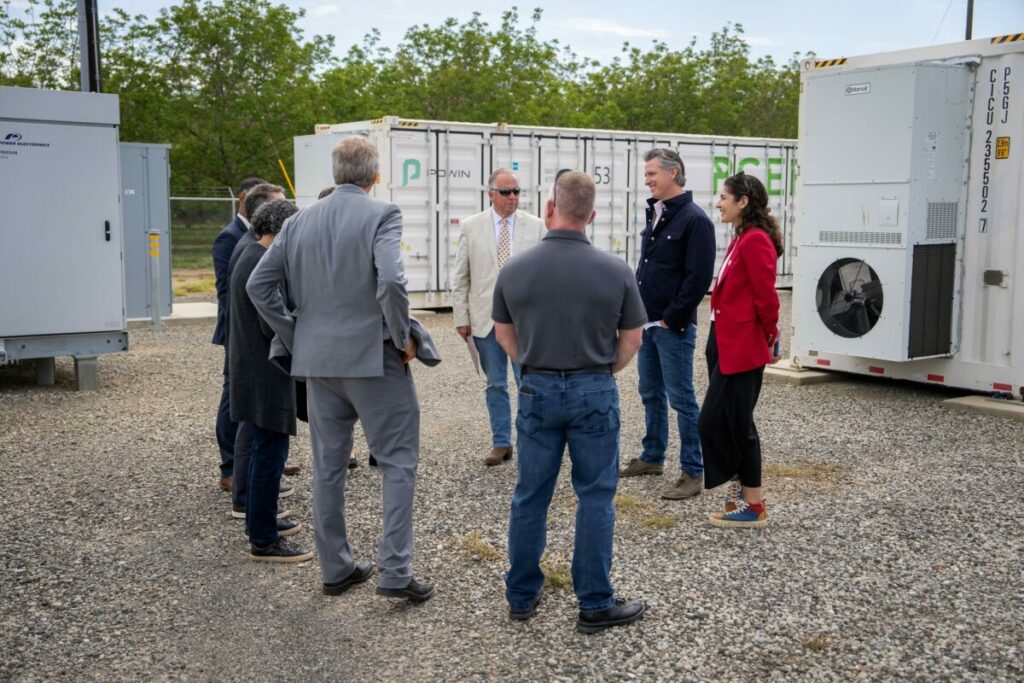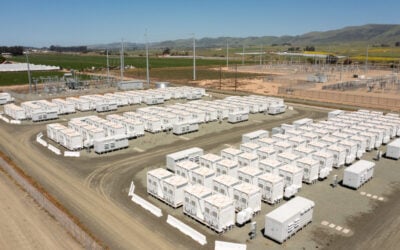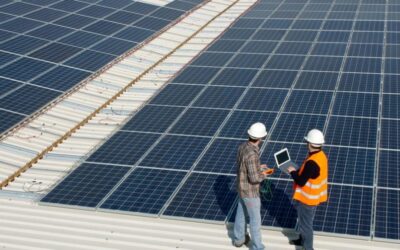
California now has more than 10GW of battery storage, with Governor Gavin Newsom hailing the state’s “energy storage revolution,” which is underway.
Cumulative installations have now reached 10,379MW in the state, and on 16 April, for the first time ever, batteries became the single largest contributor of power on the grid for a short time during the evening peak.
Enjoy 12 months of exclusive analysis
- Regular insight and analysis of the industry’s biggest developments
- In-depth interviews with the industry’s leading figures
- Annual digital subscription to the PV Tech Power journal
- Discounts on Solar Media’s portfolio of events, in-person and virtual
At 8:10 pm on that day, 6,177MW of power was being fed into the California Independent System Operator (CAISO) grid from battery energy storage system (BESS) resources, exceeding the contributions of the four other biggest sources of power: renewables (4,603MW), natural gas (5,121MW), large-scale hydroelectric (4,353MW), and energy imports (3,936MW).
Newsom noted that since 2019, when he came into office, grid-connected storage has grown 1,250% from 770MW. The state is now roughly a fifth of the way to deploying the 52GW of energy storage projected to be needed to support achieving its policy goal of 100% renewable energy on the grid by 2045.
“In just five years, California has increased its battery storage capacity more than tenfold. Our energy storage revolution is here, and it couldn’t come at a more pivotal moment as we move from a grid powered by dirty fossil fuels to one powered by clean energy,” Newsom said as he visited a BESS facility in the Western Sacramento Valley.
To be clear, Newsom did not initiate California’s battery storage buildout that now ranks it the leader among US states according to research groups including Wood Mackenzie and BloombergNEF.
The seeds were already sown with the legislation Assembly Bill 2514 (AB2514) in 2013, when California’s three main investor-owned utilities (IOUs) were instructed to target 1,350MW of energy storage procurements between them, through ownership or third-party contracts by 2020.
This target was met early, and the CAISO need for resource adequacy (RA), combined with the state’s rapid adoption of renewable energy—mostly solar PV—has led to continued development, with the investor-owned utilities, independent power producers (IPPs), and municipal, cooperative and community energy suppliers all involved.
Indeed, a release from the governor’s office noted that on 40 of the previous 48 days before his 25 April visit to the BESS facility, low-carbon energy production on the grid exceeded total demand, and last week solar PV met 97.5% of electricity demand according to CAISO figures.
BNEF forecasts 40GW/150GWh of California storage by 2030
Market research and analysis group Wood Mackenzie noted in a recent edition of its US Energy Storage Monitor quarterly report that California leads the US for energy storage installs by both power output (megawatts) and energy storage capacity (megawatt-hours).
Unlike some other leading US markets, notably ERCOT in Texas, which is the country’s second-biggest, California’s utility-scale energy storage resources are largely of 4-hour duration. This is because of how RA contracts are structured, with energy suppliers mandated to maintain reliable supplies of energy over blocks of time of that length over multi-year contracts. ERCOT’s more merchant wholesale electricity market is instead dominated by resources of 1-hour and 2-hour duration.
California’s evening peak, when solar PV production ramps down and domestic energy demand ramps up, has long been the state’s mostly costly and most polluting period of each day, and 4-hour duration BESS resources are useful in mitigating that demand, broadly occurring between around 5 pm and 9 pm.
Wood Mackenzie said that in Q4 2023, California and Texas between them accounted for 77% of all US utility-scale storage additions in megawatt, or indeed gigawatt terms. However, in megawatt-hours, California represented a 56% share of all grid-scale installs in the quarter, accounting for 6,593MWh of the 11,769MWh US total in a record-breaking three months.
BloombergNEF (BNEF) meanwhile said in its recent H1 2024 Energy Storage Global Outlook report that California deployed 3.4GW/11.1GWh during 2023. That included residential and commercial-scale installs, in which the state is also a leader.
However, BNEF had anticipated a total 4.2GW/15.6GWh of new storage going online last year in the state across all market segments, but some prominent large-scale projects were delayed into this one. On the utility-scale side, BNEF had forecast 3.5GW/14GWh of installs for the year but found the number to be 2.9GW/9.9GWh instead.
For 2024, BNEF forecasted 4.4GW/17.4GWh of utility-scale storage to go online in California out of a total 5.2GW/19.6GWh across all scales. The firm predicted that by 2030, the installed base of cumulative capacity will reach 39.8GW output and 149.7GWh, which is pretty well on track for meeting the state’s goal for 2045.
“We’re in the midst of one of the biggest transformations of our time – and California is once again leading the way,” Newsom said.
While he can’t claim credit for starting the storage “revolution,” the governor has certainly supported the technologies in his time, placing them at the centre of his state roadmap to clean energy and net zero goals.
The governor has ordered capacity procurements to meet projected energy shortfalls and set aside funding for long-duration energy storage (LDES), which the state will increasingly require as solar penetration grows and pushes daytime electricity prices lower and lower.






